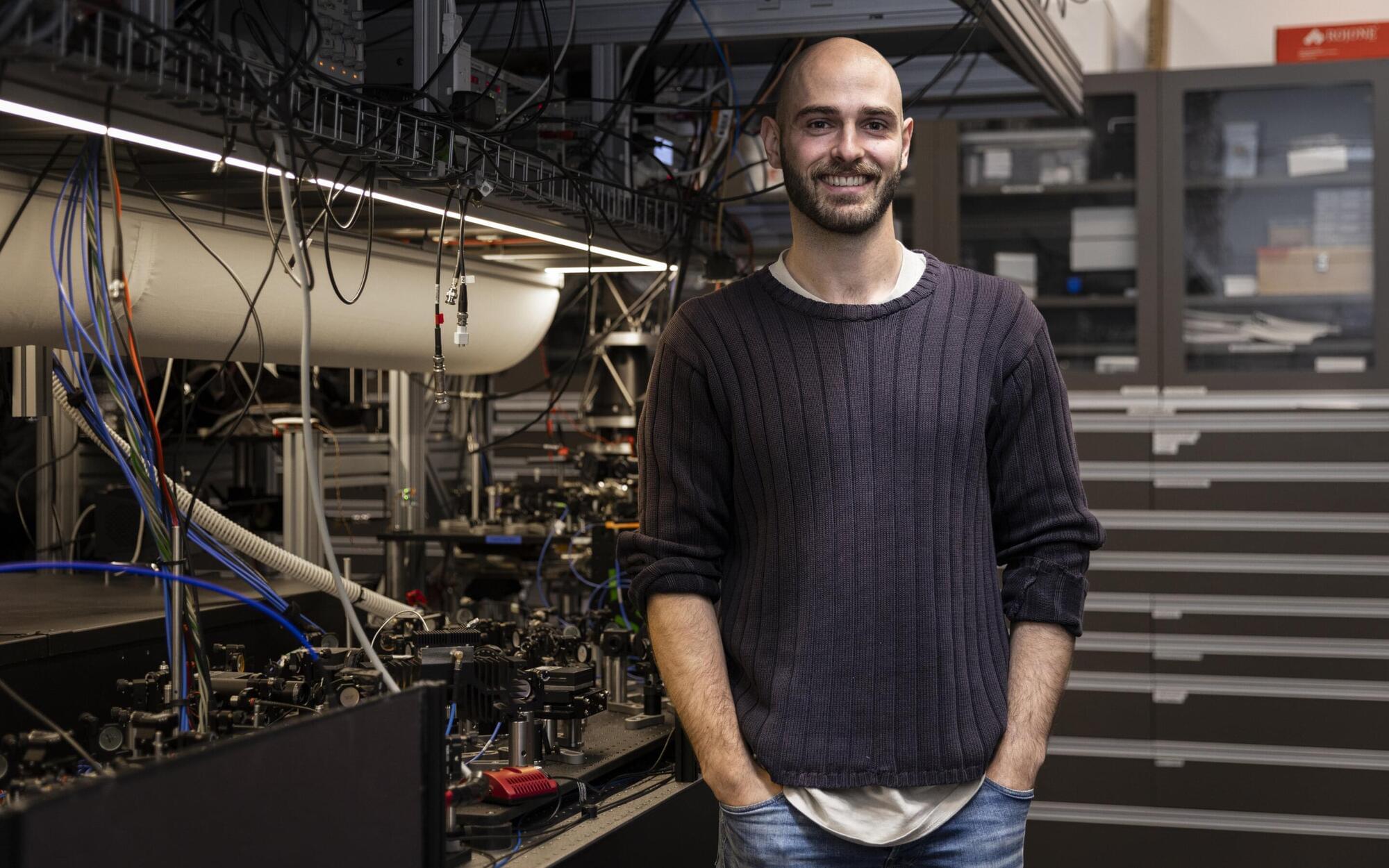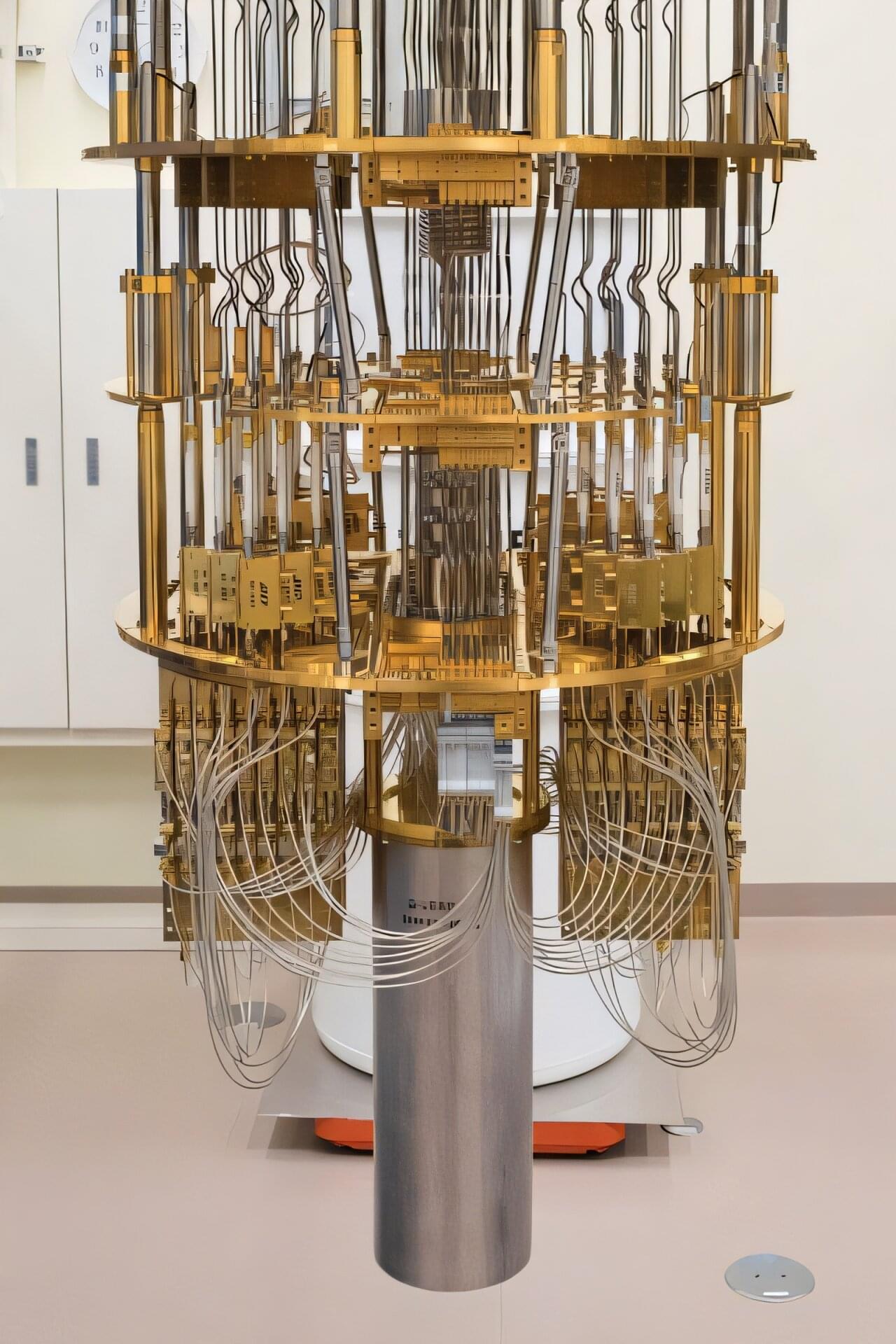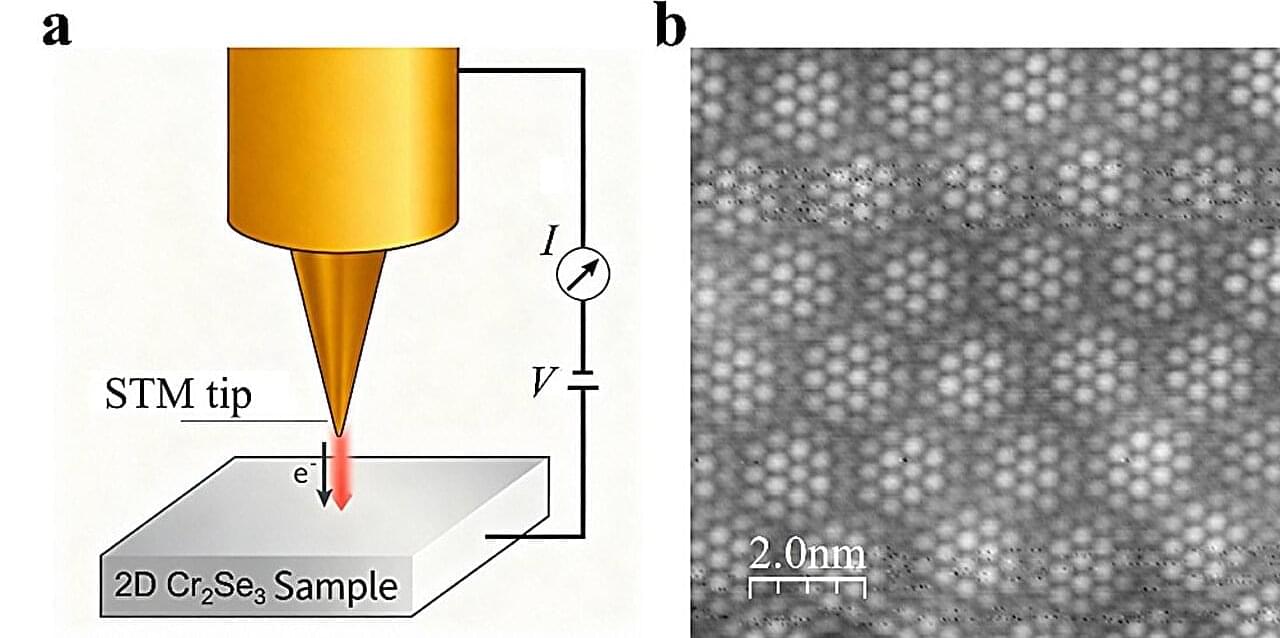The Irish mathematician and physicist William Rowan Hamilton, who was born 220 years ago last month, is famous for carving some mathematical graffiti into Dublin’s Broome Bridge in 1843.





Whether space-time exists should be neither controversial nor even conceptually challenging, given the definitions of “space-time,” “events” and “instants.” The idea that space-time exists is no more viable than the outdated belief that the celestial sphere exists: both are observer-centered models that are powerful and convenient for describing the world, but neither represents reality itself.


Researchers at the National University of Singapore (NUS) have observed a doping-tunable charge density wave (CDW) in a single-layer semiconductor, Chromium(III) selenide (Cr2Se3), extending the CDW phenomenon from metals to doped semiconductors.
CDWs are intriguing electronic patterns widely observed in metallic two-dimensional (2D) transition metal chalcogenides (TMCs). The study of CDW provides insights into emergent orders in quantum materials, where electron correlations play a non-negligible role. However, most reported TMCs exhibiting CDW are intrinsic metals, and tuning their carrier density is predominantly accomplished through intercalation or atomic substitution. These approaches may introduce impurities or defects that complicate the understanding of the underlying mechanisms.
A research team led by Professor Chen Wei from the Department of Physics and the Department of Chemistry at NUS, synthesized single-layer semiconducting Cr2Se3 and demonstrated the CDW phenomenon using scanning tunneling microscopy (STM).

Imagine the benefits if the entire internet got a game-changing upgrade to speed and security. This is the promise of the quantum internet—an advanced system that uses single photons to operate. Researchers at Tohoku University have developed a new photonic router that can direct single and quantum entangled photons with unprecedented levels of efficiency. This advancement in quantum optics brings us closer to quantum networks and next-generation photonic quantum technologies becoming an everyday reality.
The findings were published in Advanced Quantum Technologies on September 2, 2025.
Photons are the backbone of many emerging quantum applications, from secure communication to powerful quantum computers. To make these technologies practical, photons must be routed quickly and reliably, without disturbing the delicate quantum states they carry.

For more than a century, physics has been built on two great theories. Einstein’s general relativity explains gravity as the bending of space and time.
Quantum mechanics governs the world of particles and fields. Both work brilliantly in their own domains. But put them together and contradictions appear—especially when it comes to black holes, dark matter, dark energy and the origins of the cosmos.
My colleagues and I have been exploring a new way to bridge that divide. The idea is to treat information—not matter, not energy, not even spacetime itself—as the most fundamental ingredient of reality. We call this framework the quantum memory matrix (QMM).

Physicists in Australia and the United Kingdom have found a way to reshape quantum uncertainty, offering a new method that bypasses the limits set by the well-known Heisenberg uncertainty principle. Their discovery could lay the groundwork for next-generation sensors with extraordinary precision, with potential uses in navigation, medical imaging, and astronomy.
The Heisenberg uncertainty principle, first introduced in 1927, states that it is impossible to know certain pairs of properties, such as a particle’s position and momentum, with unlimited accuracy at the same time. In practice, this means that increasing precision in one property inevitably reduces certainty in the other.
In a study published in Science Advances, researchers led by Dr. Tingrei Tan of the University of Sydney Nano Institute and School of Physics demonstrated how to design an alternative trade-off, one that allows position and momentum to be measured simultaneously with exceptional accuracy.

“By playing with the two components (metal and imidazole), you can change the efficiency of absorbing the light and the chemistry of the following reactions. And that opens us up to creating new metal-organic pairings,” Tsapatsis said. “The exciting thing is there are at least 10 different metals that can be used for this chemistry, and hundreds of organics.”
Looking Ahead to Next-Gen Manufacturing
The researchers have started experimenting with different combinations to create pairings specifically for B-EUV radiation, which they say will likely be used in manufacturing in the next 10 years.